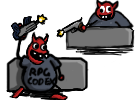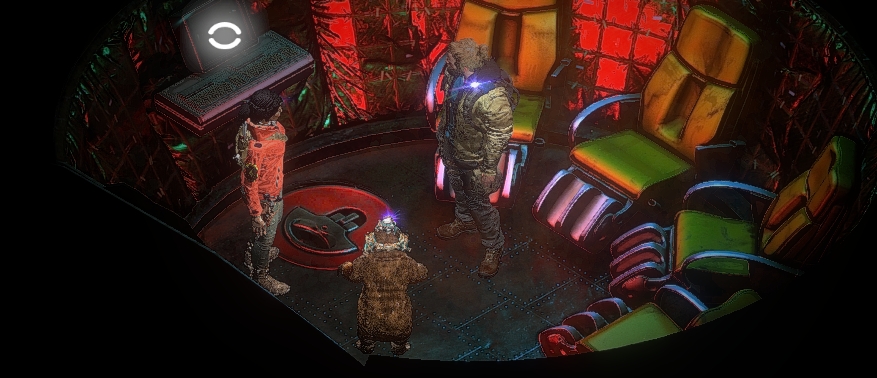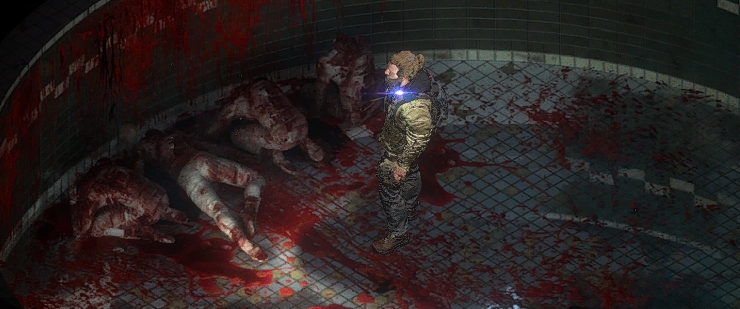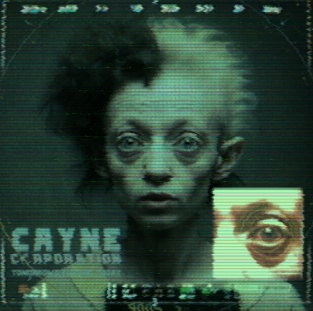What do you get if combine meaty body horror, Lovecraft, and Atlantean mythology sprinkled with
Blade Runner,
The Descent, and
Alien? Well, you get
Stasis: Bone Totem. This is the
Brotherhood’s third game in the Stasis franchise – a point & click horror adventure series that doesn’t shy away from showing the macabre and the gruesome in all its glory. So far, so good, and you can read the thoughts of the developers in an interview I made with them
here. However, it saddens me to say, that there are some problems with this title. While it maintains the horror in both atmosphere and story, the game falters and stumbles in the feature most critical to gaming: the gameplay.
Salvage for money, salvage for fame
The story follows the salvage operator couple Mac, Charlie, and their little cute cyborg teddy-bear Moses. When searching the sea for derelict salvage they come across some kind of research station that is seemingly abandoned, which translates to good money for the couple. A sorely needed thing since the pair is on their last legs economically. Seeing it’s a horror, the duo finds themselves in a bit of a pickle rather quickly. Things are not what they seem, but regardless of warnings of something nasty, they push on. This leads them further down into the rabbit hole – and it’s one dark and gruesome hole!
The storyline is pretty good, and there is much more to the characters and the narrative than what I have written here, I ensure you, I just don’t want to spoil anything. I do have to add, though – at the beginning of
Bone Totem, I found it hard to follow the couple’s motivation, as warnings of bad stuff coming are stacking up ridiculously high. I know people do nutty stuff in the pursuit of riches, but finding flayed corpses on a simple salvage run would probably be a deterrent for most sane people. However, this gets explained as the narrative takes you deeper into the fleshy abyss of hell. One of the strengths of the game is all the twists and turns it takes during its story. Even so, I got to remark that this feeling of “why the hell..?” lasted for such a long time that it left me utterly confused about their actions. Nothing in their background told me of them being stonecold scavengers. Actually, it’s the opposite if you go by their reactions to the horrible things they come across.
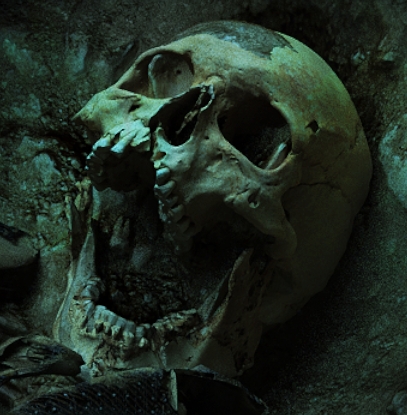
Otherwise, it’s good and makes sense for the most part. It has all the necessary elements for this type of tale. Weird ancient mysteries, with mad scientists doing shady things and monsters lurking in the shadows, ready to stick you with something mucky through the spleen. And what is not explained directly through the characters and cutscenes, you find scattered around the different locations in the form of diaries and research material. Some of these research notes look pretty darn cool, and you can tell a lot of effort went into them. Alien and gore made into one for the Giger enthusiast. Good stuff all around here.
Point & click stumble
The gameplay. Oh boy, where to start? Right off, there is nothing wrong with the fundamentals per se. It has the classic top-down isometric perspective like the older games in the series, and being an adventure game you will find items and combine them – the usual stuff with lots of trial and error. You control by clicking around, and you interact with items by dragging and dropping. Nothing bad here, fairly standard stuff. However, one major thing that brings down the gameplay is the presentation of interaction nodes. It demolishes the exploration aspect of
Bone Totem by making everything visible with one simple right click.
The highlight function shows everything interactively on each map, it’s even color-coded – green for description and blue for interaction. This means that you don’t even have to move from the start location for each new area, everything is presented on a platter with zero input required from you. A green descriptive node in another room? No problem, somehow the character you are currently controlling can sense the blood splatter in the next room and describe it. It absolutely annihilates all potential investigations since you know where to go and look at all times. It lessens the gameplay to such a degree that
Bone Totem feels more like a visual novel than an adventure game. Baffling design decision.
That is not all. The UI is sensory overload. There are nodes to inspect everywhere, and everything is always available – texts are constantly popping up when you move around the mouse cursor as it’s inevitable that you will hover over something. A better way to design this (in my opinion) is to make nodes only become visible as the character you control moves close. Additionally, only have text pop up if you inspect through right-clicking, and if interactable then show so at this point. It would make the game so much more immersive, and even if it could be considered simple in gameplay terms, it would at least be something.
I do understand that you don’t have to highlight stuff. Even so, it doesn’t change how the descriptive text nodes work. This is with consideration that highlighting is mapped to the right mouse button, which is a pretty prominent button. It tells me that this is something that should be used during play and that the game is designed around it since there are no other visual hints beyond this system.
A little more negativity
Seeing that there is no exploration the only thing you will be doing is reading text logs and solving puzzles – when the characters are not interrupting the flow by talking. Let’s start with my issue with the puzzles. They are just too numerous, and there are only so many door puzzles I can take before it gets contrived. The game even acknowledges this at one point, so at least it’s self-aware of the issue. These puzzles scale from very simple to confusing, and I would say it’s pretty standard stuff, except for the relentless rate they come at. I was drained after each play session. From one door to the next, there it will be a bunch of new items or some weird puzzle that needs to be figured out – which in the end affects the pacing and makes it slower than a mollusk at times.

Another problem is that the characters have to incessantly comment on everything. It was fine hearing them go “Oh my God”, and “Be careful” the first couple of times, but it remain a thing throughout the whole game. I wouldn’t mind it so much if it didn’t interrupt the “gameplay”, as you can’t transition to new areas, or use items when this happens. Yes, I know, it’s Lovecraftian horrors of the deep – very shocking, very spooky but you’ve seen ten flayed corpses by now!
The game just feels like a major missed opportunity going by gameplay, and I don’t understand why it is made like this. It’s a horror-themed game that hinges on that the mystery remains a mystery throughout, so why isn’t the gameplay designed after the same principle? It’s very disappointing, and it annoyed me to such a degree that after a while I didn’t care about the green descriptions. I made a beeline for the blue nodes since nothing else mattered. There are no surprises outside the narrative as you can avoid everything – like the death scenes. I activated them deliberately because I wanted to see the cutscenes. This comes off a bit backward to me.
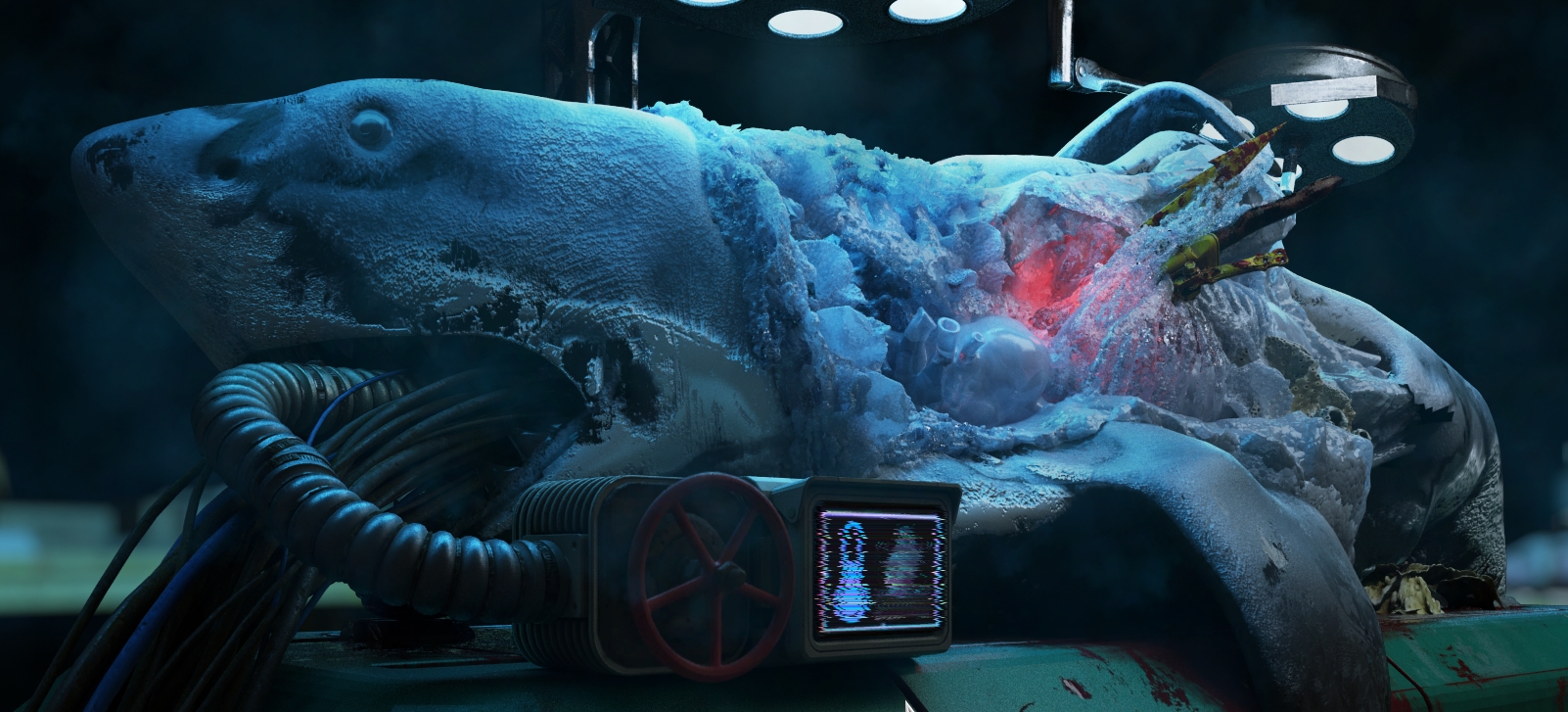
What gameplay there is, is functional, and there is still a certain satisfaction in clearing puzzles regardless of my negativity. Mixing and matching items can also be entertaining since the protagonists you control all come with their own skills and uses. Mac is strong and can bend and crush stuff. Charlie is the tech wizard of the three and can repair all kinds of items. And Moses, the very smart and brave little cyborg bear can hack computers and interfaces. You swap items between the three, so it is another layer to the standard try-all-items approach. However, since items instantly teleport between them, it feels like an extra step instead of something more substantial that affects the gameplay.
Looking & sounding great
The graphics are wonderful, and the true stand-outs are the pre-rendered maps. They are full of small and interesting details – which also means there is a lot of visual storytelling to take part in when the descriptive nodes don’t take precedence. The CGI cutscenes that play at major story points are also well made and have an undeniable cinematic flair to them, even if humans and other creatures can look a bit janky in motion, but that’s a minor issue considering the number of developers on the project. The 3D models of the characters look a tad odd, though. The models themself are not bad, however, they don’t seem to blend with the background that well. This makes them stand out like a sore thumb. It reminds me of the character models in
Commandos 2, as these games share this particular issue.
The sound has the same finesse to it as the graphics, and as expected you will hear all kinds of crunchy horror sounds during your journey into the depth. The overall design here is outstanding, and the same goes for the music. It creates a tense and a rather thick atmosphere, and you can tell you are trapped below the sea by the soundscape alone. The voice actors do their job adequately too, so nothing to complain about here.
Could have been GREAT
All this means that the
Stasis: Bone Totem could have been fantastic since the presentation both for sound/music and visuals is far beyond the standard – especially considering the small developer team. Unfortunately,
Bone Totem fails when it comes to gameplay. It makes the failure an extremely bitter pill to swallow since the other things are so good. It’s hard to recommend
Bone Totem since the immersion factor was very low for me when it comes to this crucial aspect of gaming. But as an interactive novel of some kind, I would rate it as good.
I don’t want to come off too harsh as I like the developers, and in general, they produce interesting and very niche games in a sea of low-effort titles out to make a quick buck. It’s clear a lot of effort went into
Bone Totem, however, I pride myself on being honest in my reviews, so the gameplay issues can’t go ignored. Alas, maybe next time the gameplay can match the superb presentation.
Thanks for reading.
